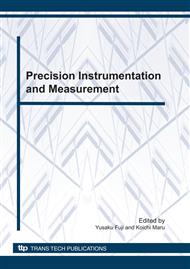[1]
Thornton, W.E., et al., Specimen Mass Measurement, Ch. 8, NASA Tech. report. N74-11867, (1974).
Google Scholar
[2]
Thornton, W.E. and Ord, J. Physiological Mass Measurements in Skylab, pp.175-182, Biomedicl Results From Skylab. R. S. Johnson and L. F Dietlein, Eds. 1997, NASA SP-377 USGPO, USA.
Google Scholar
[3]
Sarychev, V.A., et al., Device for mass measurement under zero gravity conditions, Acta Astronautica, Vol. 7. pp.719-730, (1980).
DOI: 10.1016/0094-5765(80)90104-6
Google Scholar
[4]
Ono, T. et al., Mass-Measurement Under Weightless Conditions, pp.186-191.
Google Scholar
[5]
Smith, D. and Kaufman, K., Space Liner Acceleration Mass Measurement Device for the Human Research Facility (Hrf, SAE Translations), pp.589-609, (1998).
DOI: 10.4271/981652
Google Scholar
[6]
Nikoloevna, Y.E. ISS Russian Medical Hardware catalog, pp.41-53, January (2009).
Google Scholar
[7]
Fujii, Y., et al., Balance For Measurement Mass Under Microgravity Conditions, AIAA, Vol. 39, pp.455-57, (2001).
Google Scholar
[8]
Rivetti, A., et al., BIC 3, the Latest Inertial Centrifugal Balance for Mass Measurement in Weightless Conditions, Microgravity Sci. Technol, pp.7-15, (2008).
DOI: 10.1007/s12217-007-9003-2
Google Scholar
[9]
Shimada, K and Fujii, Reconsideration of Body Mass Measurement on the International Space Station and Beyond, Key Engineering Materials, Vols. 381-382, pp.461-464, (2008).
DOI: 10.4028/www.scientific.net/kem.381-382.461
Google Scholar


